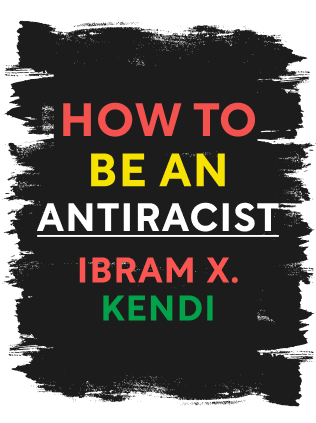

This article is an excerpt from the Shortform book guide to "How to Be an Antiracist" by tIbram X. Kendi. Shortform has the world's best summaries and analyses of books you should be reading.
Like this article? Sign up for a free trial here .
What is gendered racism? How does it use gender to create a more nuanced hierarchy for discrimination?
Gendered racism is the idea that a person’s combined identity of race and gender determines their status in society. But How to Be an Antiracist by Ibram X. Kendi emphasizes that there is no support for such biased beliefs.
Keep reading to understand gendered racism, how it started, and Ibram X. Kendi’s experiences with it.
Gendered Racism
Race-genders are combinations of race and gender. For example, Black women and White men are two race-genders.
Gender racism is a combination of racist policies and ideas that causes and maintains racial inequities between race-genders. Gendered racism links race and gender and arrange these race-genders into a hierarchy.
Example #1: Black men are 50 times more likely than White women to go to prison. This statistic is a result of two sets of policies and ideas: 1) those related to race (the stereotype that Black people are more dangerous than White people) and 2) those related to gender (the stereotype that men are more dangerous than women). This is one of the effects of policies related to gendered racism.
Example #2: The average wealth of a single Black woman is $100, while for a White woman, it’s $42,000. Even though all women are affected by sexist ideas and policies, Black women are additionally affected by racist ideas and policies.
Inequalities from gendered racism are the results of policies, not the actions of individual members of races.
History and Invention of Gender Racism
In 1991, Philomena Essed, a scholar, came up with the term gendered racism. She noticed Black women had to deal with both sexism and racism and that it was impossible to consider them in isolation. Kimberlé Williams Crenshaw, a critical race theorist, expanded on this idea and came up with the term “intersectionality.” She wrote that while sexism and racism are linked in real life, they’re rarely addressed in policy.
Though gender racism wasn’t named until 1991, it had been affecting people for far longer. For example, in 1965, a government report stated that nearly 25% of Black families were matriarchal (and therefore “broken,” in the words of the media). The author of the report said these matriarchies resulted in a host of negative consequences, including the emasculation of Black men. Following the author’s lead, others suggested Black women should mend their broken families and help empower Black men by being submissive toward their husbands, returning them to their rightful place at the head of the family. The government report also promoted the idea that Black men had been more affected by racism than Black women.
In the 1970s, Black feminist groups formed. Black women had to create their own spaces because in Black spaces, they had to contend with sexism, and in feminist spaces, they had to contend with racism. The most antiracist queer space of the time was the Combahee River Collective, which formed in 1974. The organization’s goal was for Black women to be seen as equals to any other group.
Black Single Mothers
Gender racism particularly affected Black mothers. In the 1970s and 1980s, the public became worried about the growing percentage of Black single mothers. Some said that having a father around, even if he’s abusive, is better for children than being fatherless. Others suggested that a child can’t thrive without the income of two parents. Assumptions such as these didn’t take into account the various reasons single mothers are single—the fathers are dead, in prison, or dangerous.
In 1994, Charles Murray, a political scientist, got the word out that 68% of Black children were born into single-parent households. Murray attributed this to the “welfare system,” and liberals such as Ibram’s parents attributed it to sexual irresponsibility, poverty, disengagement from Christianity’s pre-marriage abstinence, or disregard of opportunities. None of this was accurate—the higher percentage was due to married Black women having fewer children, not single Black women having more.
Negativity for Everyone
Gender racism results in negative consequences for everyone, not only certain race-genders such as Black women. For example, here are the effects on White women:
- The “ideal woman” standard. The sexist idea that the ideal woman is weak and the racist idea that the ideal woman is White combine to create the idea that the extra-ideal woman is White and weak.
- For example, this idea resulted in hatred of Hilary Clinton, who is a strong White woman.
- Controlled sexuality. If hypersexual Black women are the ultimate evil, then to be good, White women have to be the opposite—virtuous. Striving to be virtuous represses their sexuality. Additionally, when it was illegal for Black men to be with White women, this controlled women’s sexuality as well as Black men’s.
- Defense of male abusers. Gender racism is the root of the reason people defend sexual assaulters such as Trump or Bill Cosby—they think they’re defending White or Black people, respectively.
Gender racism also affects men of color:
- Feelings of inferiority. The racist idea that Black men aren’t real men and the sexist idea that “real men” are strong combine to create the idea that Black men are weak.
- Negative perceptions. Racist ideas of Black people being more dangerous, combined with sexist ideas of men being more dangerous, combine to form the idea that Black men are extra dangerous.
Ibram’s Experiences With Gender Racism
Ibram’s initial ideas on gender were shaped by his parents. They didn’t raise him to be sexist, but they didn’t train him to be a feminist either. Ibram’s parents didn’t always adhere to traditional gender roles—for example, when Ibram’s parents got married, the pastor recited the traditional wedding vows that included husbands loving their wives and wives obeying their husbands. But Ibram’s mother refused to agree to obey him, which shocked both the pastor and his father. His father asked if she would be all right with changing the vow to “submit one to another.”
However, sometimes his parents demonstrated sexist ideas. His mother called his father the head of the family, and he would lead while she submitted.
Meeting Kaila and Yaba
Ibram started to reevaluate his ideas about gender at Temple University when he met Kaila, a strong lesbian woman who was ahead of him in the doctoral program. Together with Yaba, another strong woman, Kaila led the program’s discourse. Whenever a homophobic, patriarchal, or racist idea came up, the two women went after it.
Ibram was terrified of them and tried to avoid them because he was worried he’d bring up an offensive idea and be called on it, but he also admired their confidence and intelligence. He read the books they brought up and tried to learn more about gender racism because he wanted to change his ideas.
Kaila and Yaba broke all the stereotypes of homophobia and the patriarchy—they weren’t sex-crazed, they weren’t abnormal, and they didn’t hate men or want female supremacy. They showed Ibram that it was power and policies, not specific groups of people, that were the problem.

———End of Preview———
Like what you just read? Read the rest of the world's best book summary and analysis of Ibram X. Kendi's "How to Be an Antiracist" at Shortform .
Here's what you'll find in our full How to Be an Antiracist summary :
- What racism is and how it evolved
- How you might have subtle racist thoughts and not even be aware of them
- Why being "not racist" isn't good enough






